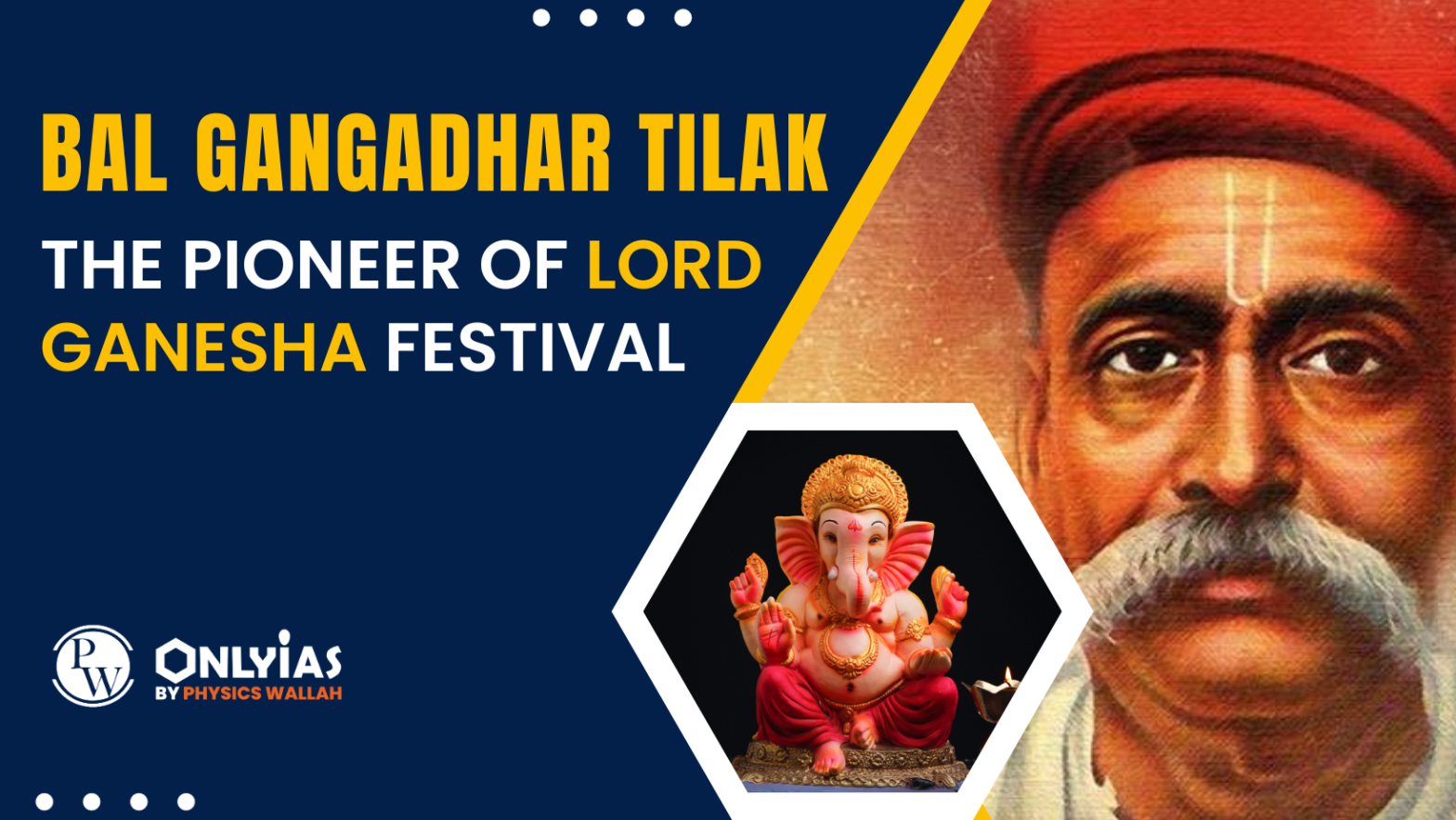Context:
- This article is based on an Editorial “How Bal Gangadhar Tilak made the worship of Lord Ganesha Grand Community Festival?” which was published in Indian Express.
- The ten-day Lord Ganesha festival began on September 19, is celebrated across India and especially in the western regions of the country, with mass participation, a transformation credited to Bal Gangadhar’s efforts, now symbolizing India’s unity and devotion.
Relevancy for Prelims: Bal Gangadhar, Kesari, Mahratta, Ganesha & Shivaji Festivals, Newspaper: Kesari & Mahratta
Relevancy for Mains: Tilak’s role in Indian National Movement and his contemporary significance. |
Bal Gangadhar Tilak (1856-1920): A Great Nationalist and Patriot
- Referrals: Bal Gangadhar Tilak referred to as ‘Lokmanya’, or the Leader of the People.
- Famous Personality: A Marathi journalist, teacher, and political and social activist.
- Prior to the emergence of Mahatma Gandhi, he was the tallest mass leader in India’s anti-colonial movement.
- Prominent Leader of the Indian Independence Movement: Bal Gangadhar Tilak played a significant role in the Indian independence movement against British colonial rule.
- Aim & Declaration: Man with a more radical aim: Swaraj or self-rule and his famous declaration (in Marathi) was “Swaraj is my birthright, and I shall have it.”
- He was a prominent leader in the Indian freedom struggle who ardently advocated for “Swaraj” or self-rule for India.
- Magic of Attraction: A fiery and fearless person, and used a direct language that attracted a large audience.
- Promotion of Indian Culture and Heritage: Tilak was not only a political leader but also a staunch advocate for the preservation and promotion of Indian culture and heritage.
- Criticism: Tilak has been criticized for giving the freedom struggle a communal shade and for his conservative stand on women’s emancipation and caste reforms.
Also Read: Home Rule Movement (1915-1916)
Bal Gangadhar Tilak and His Path to Indian Nationalism
- Mobilization: To mobilize the people against British rule, he invoked pride in Indian heroes.
- Political Campaigns: He relied on political campaigns that were infused with Hindu imagery and symbolism.
- Use of Writings: In 1881, Tilak, along with G G Agarkar, founded the newspapers ‘Kesari’ and ‘Mahratta’ and used them to spread nationalist resistance against British rule.
- Ganpati Festival: In 1893, he started the new tradition of worshiping Lord Ganesha or Ganpati as a community festival where patriotic songs would be sung and nationalist ideas would be propagated.
- The Lord Ganesha festival that we witness every year on Ganesh Chaturthi is perhaps grander than Tilak himself had ever imagined.
- Prior to 1893, the Ganesh festival used to be a one-day affair, largely observed in private, primarily by Brahmins and upper castes.
- However, Through his writings, fiery speeches, and organizational intellect, he encouraged and advocated bringing the Ganesh festival into the public sphere.
- During the festival deeds of self-denial and valor were put forth for chasing before the young by fiery speakers and priests.
- Shivaji Festival: In 1896, Bal Gangadhar Tilak started it to further the cause of nationalist resistance with an aim to inspire nationalist ideas among young Maharashtrians.
- Boycott: In 1896, Bal Gangadhar Tilak organized a campaign in Maharashtra to boycott foreign cloth to protest the imposition of an excise duty on cotton.
Also Read: Popular Movements/Events In India
Conclusion:
The Lord Ganesha festival has also undergone major shifts over the years. It has now become a space where political parties are ever active and commerce thrives. But at its heart, it is still a product of Bal Gangadhar Tilak’s vision of a grand public celebration, marked by mass participation.
| Attempt the Mains Question: What role did Bal Gangadhar Tilak play in the Indian Independence Movement, and how did his ideology and strategies influence the trajectory of the struggle for independence in the early 20th century? (250 words, 15 Marks) |
![]() 26 Sep 2023
26 Sep 2023

